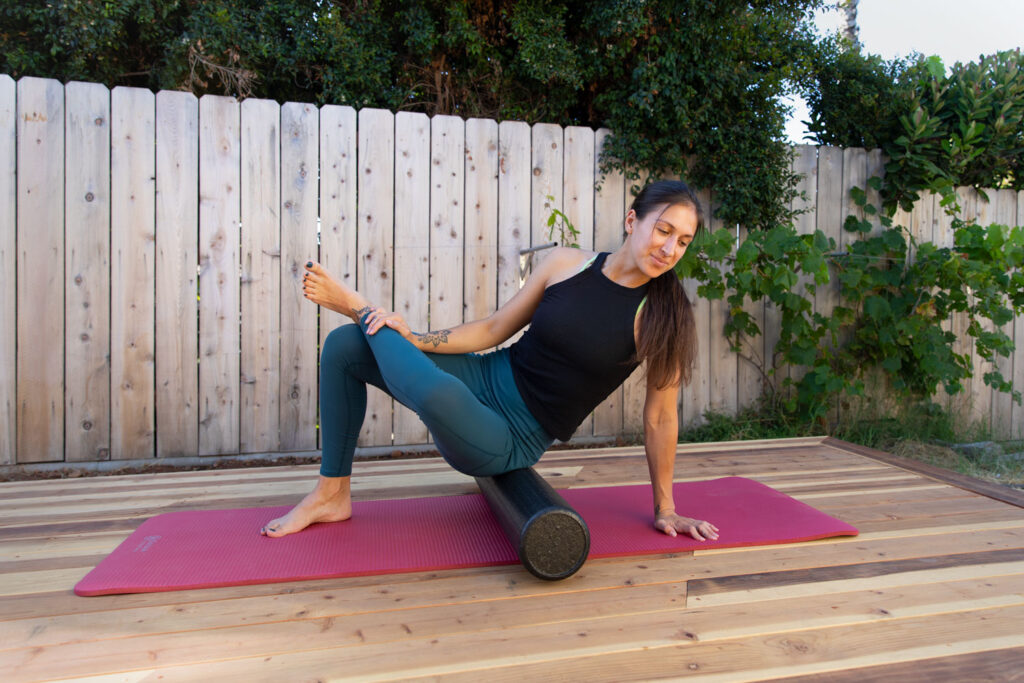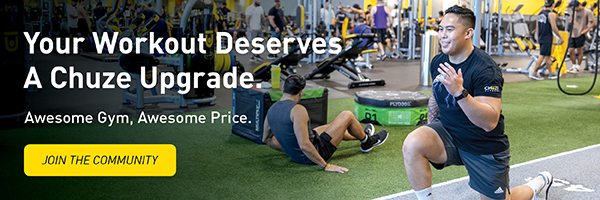What does Foam Rolling do?
No matter what your specific fitness goals are, there’s more to total body fitness than cardio or strength training. Foam is a complementary practice that can support your physical health in just this way.
But what exactly does foam rolling do?
Foam rolling uses a dense cylinder of foam to perform what is called self-myofascial release, or SMRwhich can help reduce inflammation and ease soreness by targeting your connective tissue.
Foam rollers seem pretty easy to use, but there are some techniques that can maximize the physical benefits you get from them. Below we discuss how foam rolling works and how to do it correctly to help you achieve and maintain good physical health.
Foam rollers: what they are and what they are used for
Whether you find them at the gym or in a physical therapy center, foam rollers are a tool to support both muscle recovery and overall well-being.
Most foam rollers look like smooth cylinders, but you can also find:
- Textured foam rollers – Instead of having a smooth surface, these rollers are made with ridges or indentations that help access deeper levels of muscle tissue. As a result, they may feel more intense when using them. However, textured foam rollers can be especially helpful for those with increased muscle tension or those who enjoy a deeper massage.
- Massage balls – Although not a typical foam cylinder, they serve a similar function. Massage balls, which can be made of foam, are best suited for precise work on muscle tissue in a small area. For example, you can use them to build tension in your feet by standing on them or manually rolling them over the arches of your feet.
Foam rollers are primarily used to work out muscle flexions, increase blood flow, and increase range of motion. They are a great addition to fitness because they promote muscle recovery and increase flexibility.
Advantages of foam
Most people who use foam rollers cite one reason for using them: “They just feel good.” But foam rollers offer a number of benefits that can help optimize your fitness routine and health. These include:
- Pain relief – By applying pressure, foam rollers are a self-massage tool that can help compensate for tender muscles. This can be helpful after a particularly hard, high-intensity workout, especially if you experience delayed muscle soreness.
However, if you are experiencing active soreness, foam rolling may be more uncomfortable than helpful. If you experience a sharp pain while using it, it is best to postpone it and return to it as soon as you feel better.
- Expanding the range of motion – If you use foam rollers as a regular part of your routine, you may notice that your flexibility improves. This is because de-stressing can help increase the range of motion in your joints, which can pay dividends for any physical activity, whether you like to lift weights, do yoga or run.
- Injury prevention – In addition to the gym, foam rollers can also benefit your everyday life: people with poor posture or exercise habits or repetitive motions in the workplace may be more susceptible to injury. By increasing blood circulation and preparing muscles and tissues for exercise, foam rollers can help reduce the risk of injury when used correctly.
Relaxation – Not everyone enjoys the physical experience of foam rolling, but for some it’s the closest thing to a massage without paying for it. If done correctly, the pressure applied while foam rolling can bring the parasympathetic nervous system online, creating a feeling of relaxation and pleasure.
The use of foam rollers basically revolves around a technique known as independent myofascial releaseor SMR. Let’s take a closer look at what myofascial release is and what it can offer your fitness regimen.
What is myofascial release?
Myofascial release works on fasciaa kind of connective tissue that surrounds the organs and muscles of the entire body. Because fascia extends throughout the body, it is believed that working on one local area can help relieve pain in another area. Because of this, many massage therapists will work on a specific trigger point to address pain elsewhere in the body.
Myofascial release techniques like foam rolling do the same thing by targeting specific “trigger points” in the body. These are areas where muscle fibers gather and tighten, forming painful, sticky spots known as knots. Myofascial release techniques—foam rolling and massage—can help these knots relax, relieving muscle tension and tightness.
In most people, the fascia can easily become strained or uncomfortable, even if you don’t experience sharp pain in one local area. This may be especially true if you:
- High physical activity
- Sportsman
- Recovery from injury
- Do regular exercise every day
Self myofascial techniques such as foam rolling can help by applying steady pressure to target areas, allowing the fascia to relax, increasing blood flow and ultimately reducing soreness or pain.
How to use a foam roller
Many people start using foam rollers without knowing the different techniques to get the most out of them. Fortunately, we have some tips that you can put into practice:
- Set it up – The easiest way to use a foam roller is to put it on the floor and rest your body on it. For example, if you want to massage your IT bracelet, lay the roller sideways.
- Start slow and gentle – For such a simple-looking object, foam rollers can bring quite a lot of physical sensations. If you are new to using this tool, try to start slowly and gradually increase the pressure until you find the feel that is right for you.
Tip: If the feeling is too strong, you may want to look for a slightly more pliable or less dense foam roller. This can help reduce the intensity of the exercise.
- Watch for stressed areas – While moving the roller over the body, try to hang on tense places for at least 20 seconds. This will give your muscles enough time to release tension and relax.
- Use your breath – If the sensation is particularly strong, deep, slow inhalations and exhalations can help ease the moment. The more time you spend on the stressed area, the more likely you will get better results.
Sometimes trying a foam roller at a slightly different angle can change the feel, comfort level, or relief you get from the experience.
Who should use a foam roller?
For most people, using a foam roller can be an easy and affordable way to rejuvenate your fitness routine and feel good about yourself. They are especially recommended for:
- Very active people
- Athletes
- People who work in sedentary jobs
- Mature adults
While foam rollers appeal to most, they may not be the ideal self-massage tool for some. This includes:
- People who have recently been or have been seriously injured – If you are recovering from a serious injury, it is not wise to use a foam roller unless recommended by your doctor or physical therapist.
- Some are pregnant – While foam rollers can be helpful for eliminating curves during pregnancy, they may not be safe in every trimester. If you are pregnant, consult your doctor before use. It is also recommended to avoid inversion of the calves during the third term, as this can lead to premature birth.
- People with certain diseases – Those with health problems related to blood circulation, lungs or bones should consult their doctor before using a foam roller.
Some research suggests that foam rolling may be particularly beneficial for those suffering from fibromyalgia, which can cause generalized chronic pain. The condition is believed to be related to myofascial pain syndrome, and by working on the fascia, many patients can find relief.
When should I use a foam roller?
Foam rollers can be used both before and after training.
Exercising before your workout can help prepare your muscles for the next routine, increasing your flexibility during your workout. After a workout, foam rolling can help increase circulation and relieve muscle tension.”
However, you can also use foam rollers anytime you want to relax! After a long day on your feet – or maybe just an evening spent in front of the TV – it can feel dreamy to catch a glimpse of a home video. Over time, foam rolling after the gym can become your favorite part of your workout regimen.
Work hard, relax at Chuze Fitness
From heart-pumping group fitness classes to unrivaled amenities, every Chuze Fitness is designed to help you stay healthy. Whether you’re training for a triathlon or just stepped on the Stairmaster, Chuze will keep your routine going with you and our friendly staff and community are here to help you achieve your goals.
Our members range from brand new to fitness athletes who just want a smoothie, a sauna, and babysitting while they work out. Regardless of your membership level, you’ll find top-of-the-line equipment and passionate trainers, all at an affordable price.
Still not sold on joining us? Try a 7-day free pass and find out what it’s like to choose Chuze.
Sources:
Health line. What are the advantages of foam? https://www.healthline.com/health/foam-roller-benefits#risks
Health line. What is delayed onset muscle soreness (DOMS) and what can you do about it?
https://www.healthline.com/health/doms
Fits very well. The ultimate guide to foam rolling. https://www.verywellfit.com/the-ultimate-guide-to-foam-rolling-8559261
Health line. What is myofascial release and does it work?
https://www.healthline.com/health/chronic-pain/myofascial-release
Mayo Clinic. Myofascial pain syndrome. https://www.mayoclinic.org/diseases-conditions/myofascial-pain-syndrome/symptoms-causes/syc-20375444
 Reviewed by:
Reviewed by:
Ani is the Vice President of Fitness at Chuze Fitness and oversees the Group Fitness and Team Training departments. She has over 25 years of experience in club management, personal training, group exercise and instructor training. Ani lives with her husband and son in San Diego, California and enjoys hot yoga, snowboarding, and all things wellness.
2024-08-27 02:51:16
https://chuzefitness.com/wp-content/uploads/FoamRoll-02-1.jpg


